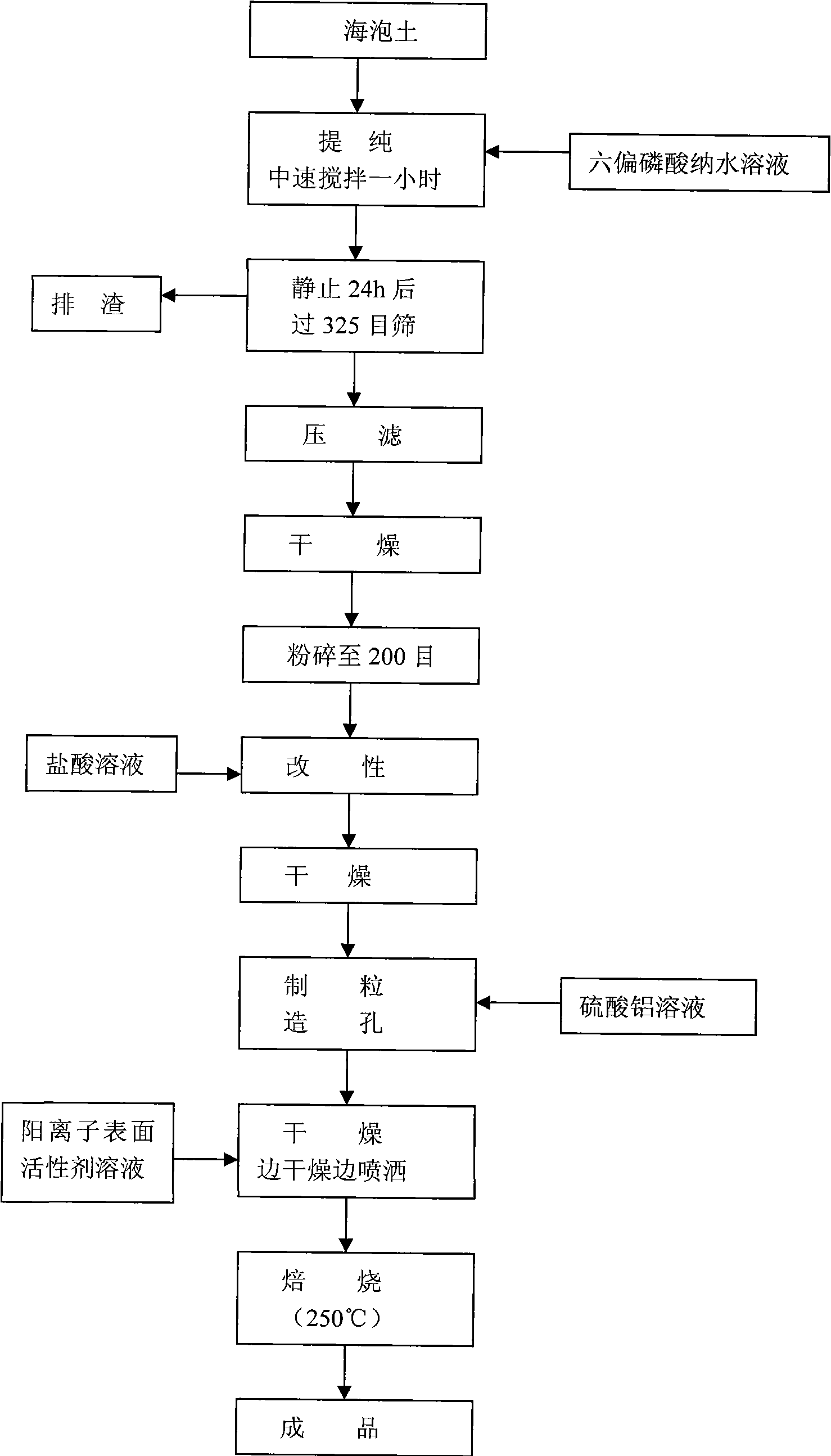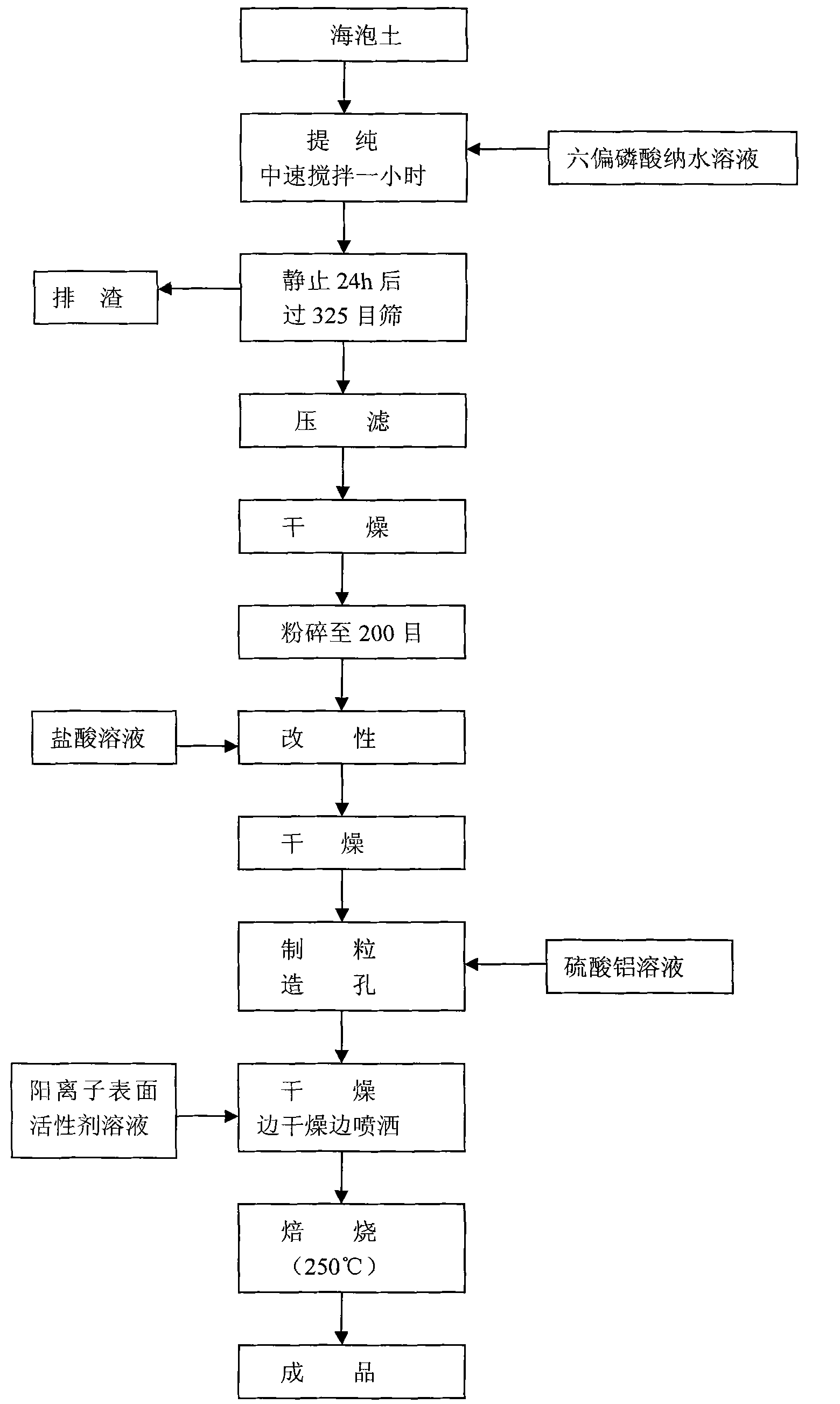Hollow glass desiccant and production method thereof
A production method and desiccant technology are applied in the field of insulating glass desiccant and its production, which can solve the problems of high production cost and pollute the environment, and achieve the effects of improved adsorption function, strong adsorption capacity and excellent adsorption performance.
- Summary
- Abstract
- Description
- Claims
- Application Information
AI Technical Summary
Problems solved by technology
Method used
Image
Examples
Embodiment 1
[0044] A kind of hollow glass desiccant production method of the present embodiment, by weight, process steps include:
[0045] Step 1: Add 100 parts of sepiolite into water and stir to disperse, the ratio of parts by weight of sepiolite to water is 1:2 to 1:6, and the sepiolite is refined with a purity greater than 80%; After stirring and dispersing for one hour, add an aqueous solution containing 1-5 parts of sodium hexametaphosphate;
[0046] Step 2: Statically settle the mixed liquid for 10 to 26 hours, preferably 24 hours, and then remove the lower layer of dregs;
[0047] Step 3: Pass the obtained sepiolite slurry through a 300-350 mesh screen, preferably a 325 mesh screen in this embodiment;
[0048] Step 4: carry out drying treatment;
[0049] Step 5: crush the dried product to 180-220 mesh, preferably to 200 mesh in this embodiment;
[0050] Step 6: adding an aqueous solution containing 1-4 parts of hydrochloric acid for inorganic modification;
[0051] Step 7: Ca...
PUM
| Property | Measurement | Unit |
|---|---|---|
| particle diameter | aaaaa | aaaaa |
| water content | aaaaa | aaaaa |
Abstract
Description
Claims
Application Information
 Login to View More
Login to View More - R&D
- Intellectual Property
- Life Sciences
- Materials
- Tech Scout
- Unparalleled Data Quality
- Higher Quality Content
- 60% Fewer Hallucinations
Browse by: Latest US Patents, China's latest patents, Technical Efficacy Thesaurus, Application Domain, Technology Topic, Popular Technical Reports.
© 2025 PatSnap. All rights reserved.Legal|Privacy policy|Modern Slavery Act Transparency Statement|Sitemap|About US| Contact US: help@patsnap.com


